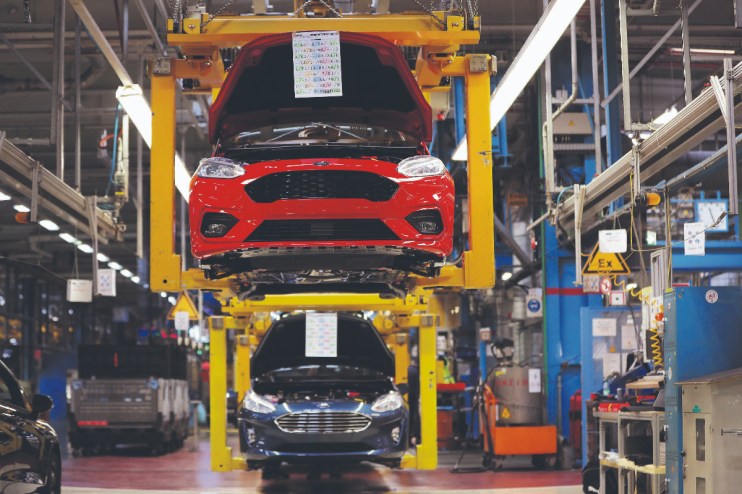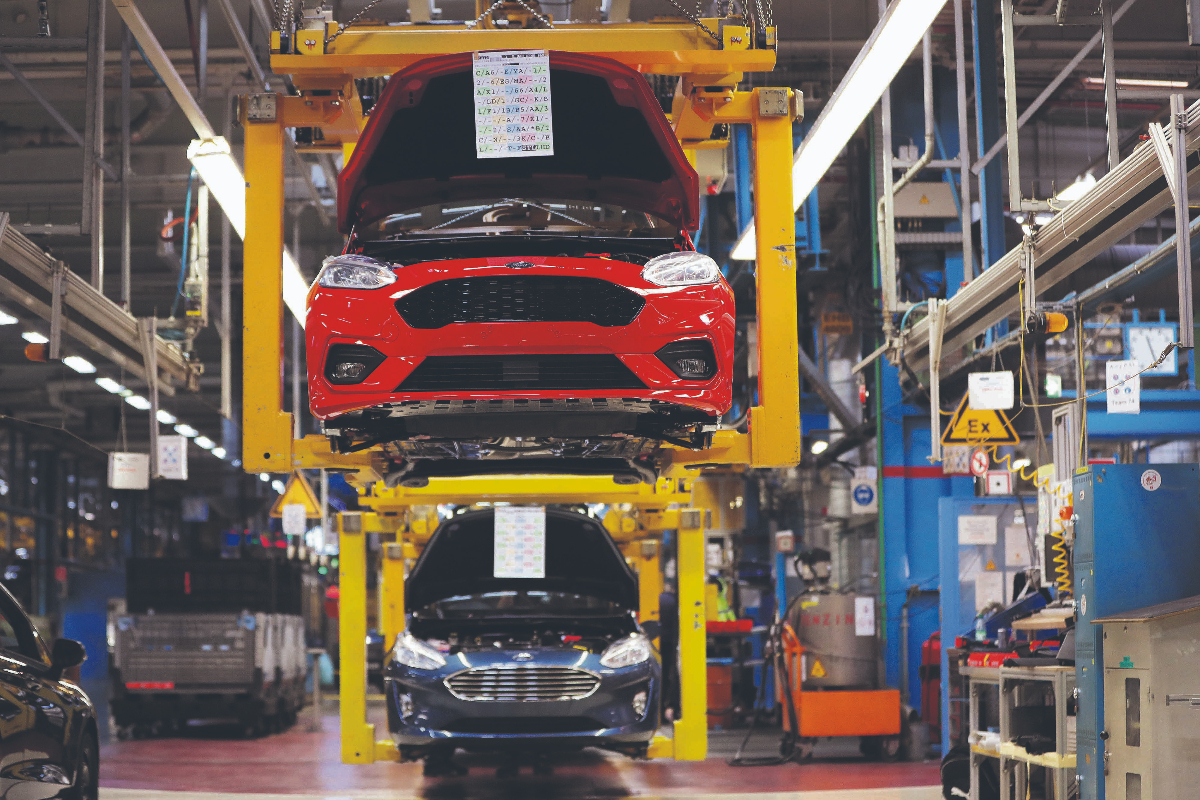Wednesday 01 October 2025 10:32 am
| Updated:
Wednesday 01 October 2025 10:40 am
Share
 Manufacturing has suffered yet another downturn in activity over September. ( Photographer: Krisztian Bocsi/Bloomberg via Getty Images)
Manufacturing has suffered yet another downturn in activity over September. ( Photographer: Krisztian Bocsi/Bloomberg via Getty Images)
A breakdown in activity across the manufacturing sector has deepened as new data has shown export work coming to a halt and investment falling flat.
S&P Global’s purchasing managers’ index (PMI) for manufacturing in September showed the sector was still struggling to bounce back despite some quiet optimism in recent months.
Activity in the sector dropped to a five-month low due to a drop in orders at one of the “greatest extents in the past two years”, with the PMI reading falling to 46.2 – significantly lower than the 50-figure benchmark for neutrality in output.
Disruption caused by a cyber attack on Jaguar Land Rover had ripple effects on the wider manufacturing sector, according to researchers.
Tariffs and high energy costs also weighed down on the confidence of clients.
S&P Global pointed out that export orders from all of the US, the EU, the Middle East and Asia had declined at one of the quickest paces in years.
Manufacturing output ‘similar to pre-2008 levels’
Employment also fell for the eleventh consecutive month due to the pressures of a higher national minimum wage and Rachel Reeves’ hike to employers’ national insurance contributions (NICs).
Rob Dobson, a director at S&P Global Market Intelligence, said new data provided “further worrying news for the health of UK industry”.
Read more
Manufacturing recovery collapses amid spiralling costs
“Manufacturers are facing an increasingly challenging environment, with intakes of new business and levels of production hit by weak market sentiment, a dearth of new export work and a high-cost environment exacerbated by tax and labour cost rises,” Dobson said.
“Companies entwined into the autos supply chain are also facing a temporary hit to activity following the cyber-attack on JLR.”
“Confidence about the next 12 months remains at a relatively subdued level, job losses have been recorded in each of the past 11 months, and a further cut in purchasing activity is symptomatic of a focus on trimming non-essential spending.”
One set of good news was that the rise in cost prices had slowed and could allow for interest rate cuts to “help offset any higher taxes announced in November’s Budget”, Dobson added.
Martin Beck, chief economist at WPI Strategy, said some of the weaknesses highlighted “may be overstated” as the attack on JLR could be a “temporary blow” and the PMI may exaggerate the risks in times of high uncertainty before Budgets.
But Beck said: “The bigger picture is harder to ignore. The official measure of UK manufacturing output is barely higher than before the financial crisis all the way back in 2008.
“UK firms are paying the highest industrial electricity prices in the developed world, while carmakers in particular are being squeezed by the government’s net-zero mandate, aggressive Chinese competition and US trade policy.”
“Manufacturing accounts for only 10 per cent of the UK economy, so the direct drag of the sector’s weakness on GDP is modest. But its role in driving innovation and productivity means persistent manufacturing weakness risks leaving broader scars on the UK’s long-term growth prospects.”
Read more
UK economy on ‘much stronger footing’ as growth hopes rise
Similarly tagged content:
Sections
Categories
People & Organisations
